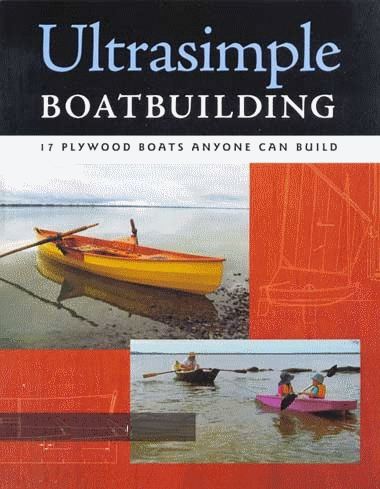
First came from Robert: -
Ross- Im following Whimbrel developments with keen interest. I have long considered Jim Michalaks Frolic2 based on Gary Bs Everglades Challenge success with the design. I live 30 minutes from the start of the EC and hope to enter in the near future.
My only concern thus far is the length of the cockpit and cabin floor. Your drawings show the opportunity for one to stretch out in each spot, but I am 6 4" tall. Can you share approximate lengths of those spaces?
The cabin and cockpit arrangement on Whimbrel owes much to the brilliant design concept that Phil Bolger employed in his Micro. By that I refer to the cabin space and the cockpit "overlapping" longitudinally so that a person sitting or lying down at the forward end of the cockpit is actually positioned above the legs of a reclining person in the cuddy-cabin - in much the same way as happens with quarter berths in larger cruisers.
 |
| You can see here how the accommodation spaces overlap |
 |
| Periwinkle on launching day showing the self-draining outboard well. The camera had a wide-angle lens making the well look a bit larger than it is in the flesh |
Back to Roberts question...
The longitudinal space available in the cockpit, measured between the main bulkhead and the forward bulkhead of the aft deck i.e. the total length of uninterrupted sleeping/sitting space is 6ft 8-9/16". In the cabin, there is 6 6-5/8" of bunk-space with an additional 11-1/8" of clear space between the forward end of the bunk and the forward bulkhead of the cabin giving 7 5-3/4" total. There are compartments leading forward from the end of the cabin for stowage - two accessible from in the cabin, and two from on the deck which drain overboard - used for anchors etc.
Another comment came from Wayne Jorgensen: -
Ross
another quick question re Whimbrels pram bow. Ive spent some time watching Sabots trying to punch into a chop- to the detriment of their speed and handling. Wont there be the same issues with Whimbrels near vertical pram bow? Scandinavian prams lift their bows much higher so this is not really an issue with them but then they are not live aboard cruisers either.
Regards
Wayne
I agonised over this very matter when I was doing the initial hull modelling. The competing factors were;
- maximum volume and reserve buoyancy on a given LOA;
- maximum speed (in smooth water) from a given LOA;
- lack of annoying wavelet noise under the bow while at anchor;
- a chine-line (in body-plan view i.e. viewed from bow and stern) which would produce the minimum cross-flow and eddy-making.
It was Phil Bolger who pointed out that a vertical transom gives the maximum waterline length for a given length on deck. He also said that a vertical transom can dig into waves and throw spray - but he then went on to say that by raking the stem forward it would reduce the spray and the digging tendency, but would make the boat longer. So why not pull the waterline length out to match the new length on deck with a vertical transom and get even better performance? Here is one of his several comments on the subject: -
"Raked transoms make a faster boat less badly stopped by waves if they are raked out from the given bottom length, but in that case the boat would be better still if the waterline were carried out to plumb transoms at the new overall length...." (Boats with an Open Mind, International Marine 1994)
What I could say to make myself feel justified is to say that Whimbrel was a 17 boat with a nicely raked bow transom, but I pulled out the bottom length to produce more volume and speed...... But no, I drew what I thought was a good compromise for a fellow who wanted a maximum LOA of 17. The customer went overseas and had to cancel the design, but I was so taken with it by that time that I decided to finish her off as a stock plan. That is why it has taken so long for me to finish, as I only work on the drawings occasionally.





0 komentar:
Posting Komentar